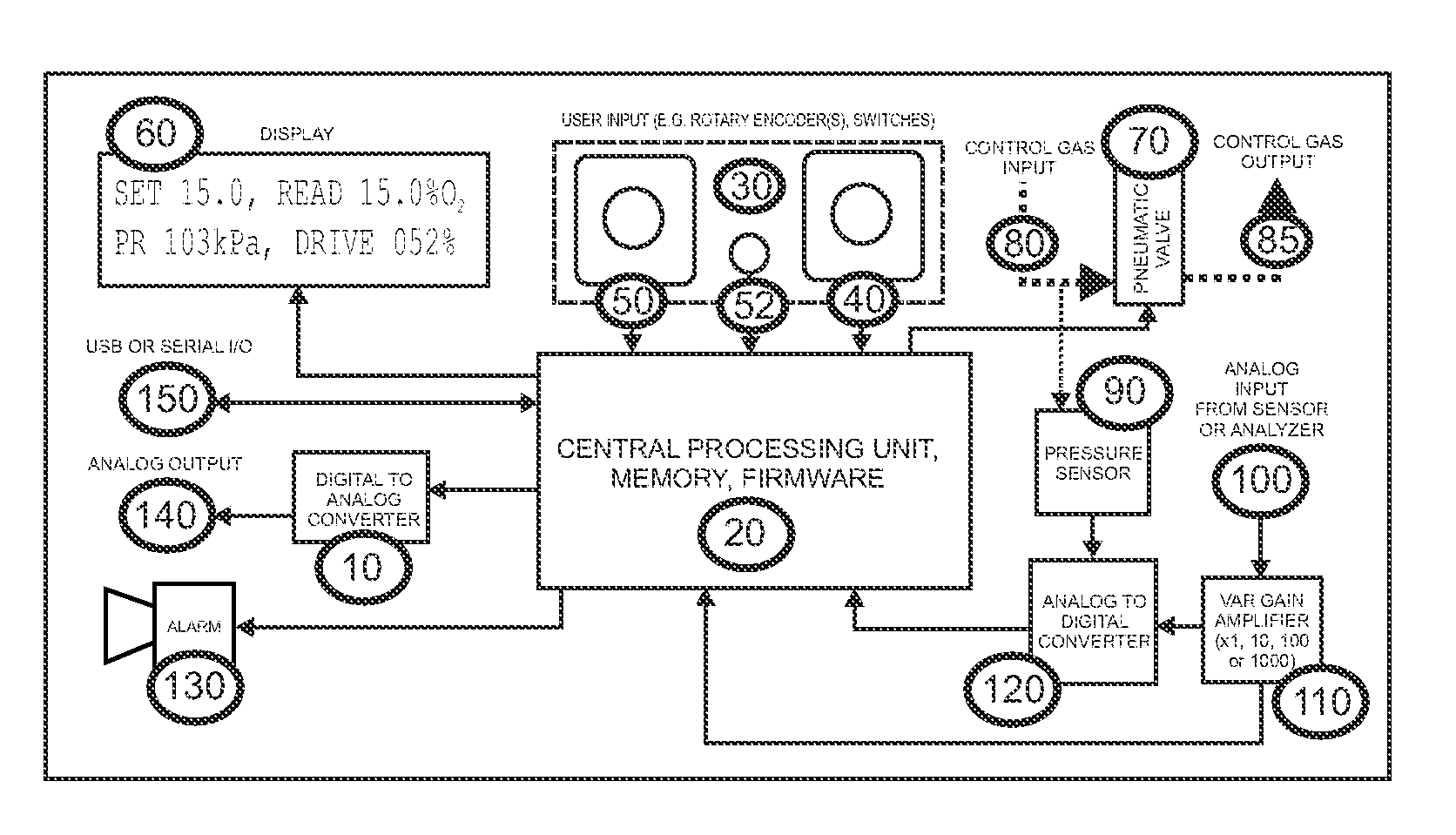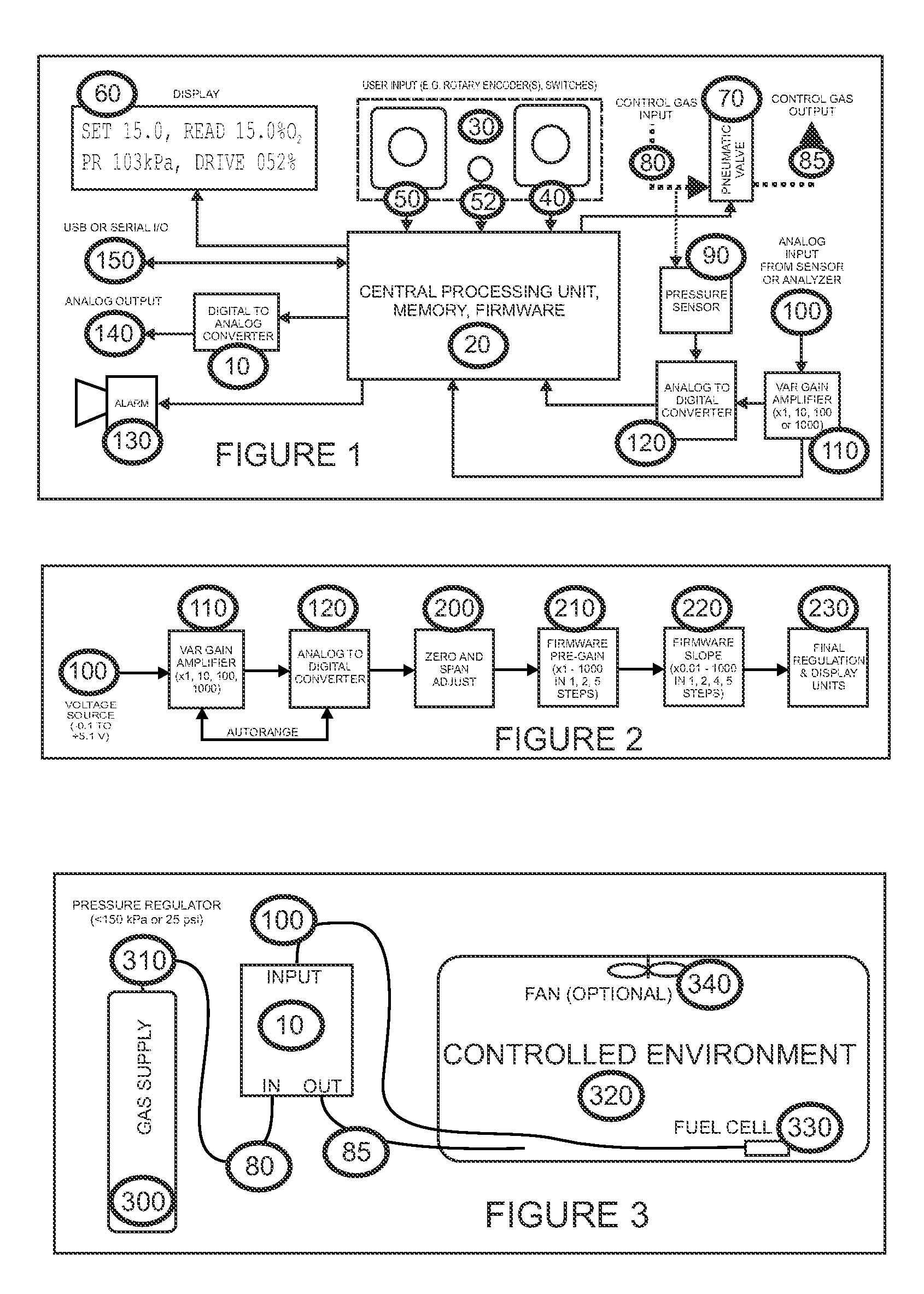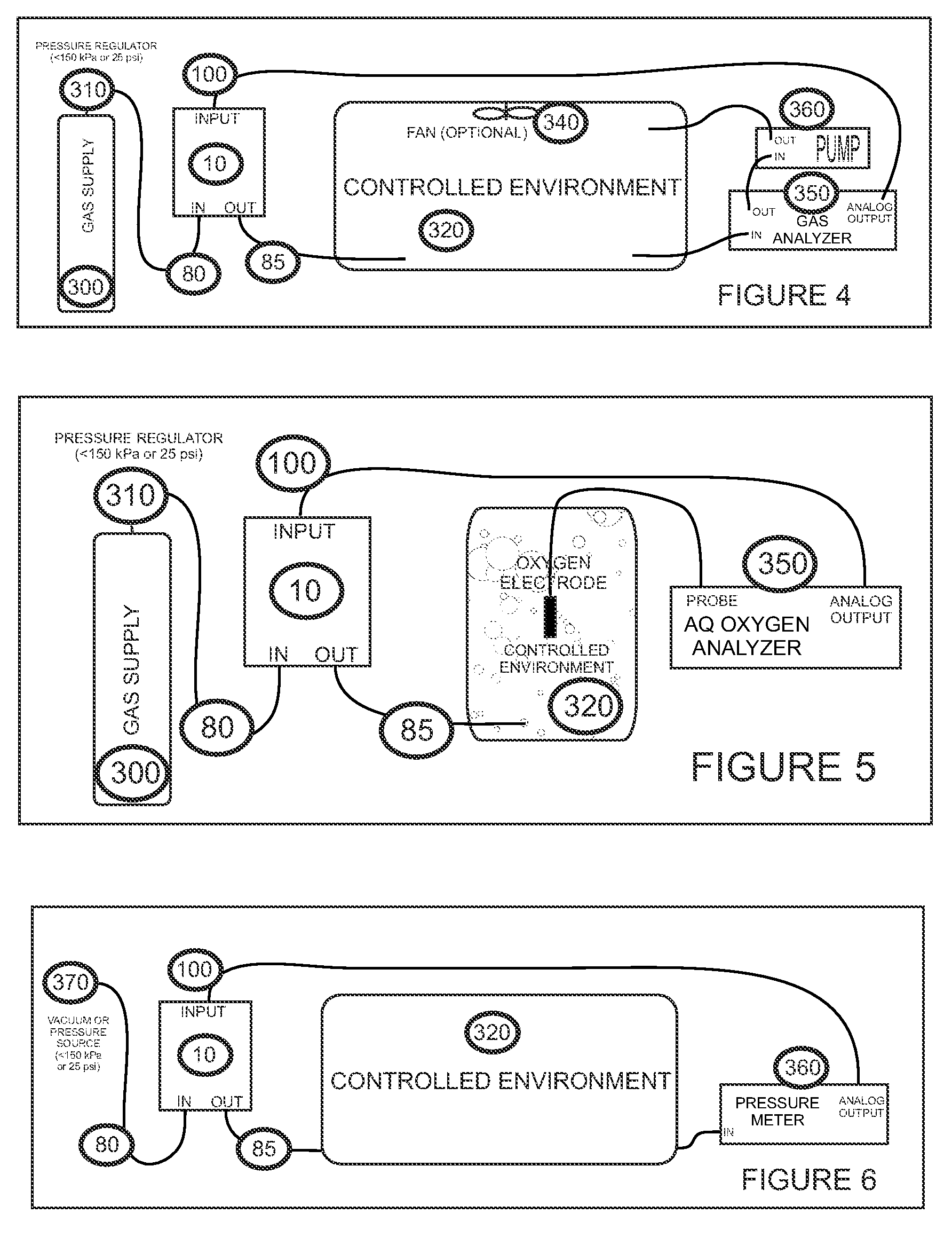Universal Regulatory Apparatus for Controlled Environments for Use with Added Sensors and Analyzers
- Summary
- Abstract
- Description
- Claims
- Application Information
AI Technical Summary
Benefits of technology
Problems solved by technology
Method used
Image
Examples
example 1
Using the Apparatus to Regulate Oxygen Using a Fuel Cell Sensor
[0069]FIG. 3 is a schematic of the set up of this experiment. The gas supply (oxygen, nitrogen, helium, etc.) 300 provides gas to the apparatus 10 at a pressure of no more than 150 kPa, usually through a pressure regulator 310. The pressure regulator 310 has an outlet which is connected to gas inlet 80. For regulation of oxygen above 21% oxygen, the gas supply 300 is oxygen. For regulation of oxygen below 21%, the gas supply 400 is any diluent gas such as nitrogen or helium. Generally, the smaller the enclosure 320, the lower the required pressure for efficient regulation. The fuel cell 330 should be positioned in an open area of the controlled enclosure, away from sudden temperature shifts. An optional fan 340 to stir the air will assure that the air is well mixed, assisting in the speed and stability of regulation. The fuel cell 330 is calibrated before being connected to the inventive apparatus 10 at input 100.
example 2
Using the Apparatus to Regulate Oxygen or Other Gas Using an Analyzer
[0070]FIG. 4 shows the general set up for controlling oxygen, carbon dioxide, carbon monoxide, etc. using a specific gas analyzer. This is very similar to the fuel cell oxygen regulation set up, except that (a) an external analyzer is used, and (b) the gas being controlled in not necessarily oxygen. The gas could be carbon dioxide, water vapor (using a bubbler on the output line from the apparatus), carbon monoxide, methane, etc. FIG. 4 additionally shows a pump 360 (which may be internal or external to the analyzer, depending on the analyzer make and model). The pump 360 is required to give adequate sample flow for most analyzers except, e.g., hygrometers with an external probe. One example of a suitable sampling pump is the Sable Systems SS-3 subsampler. The tubing to the external analyzer should be kept as short as practical, with a rather high flow rate in the sampling circuit (typically about 200-1000 ml / min)....
example 3
Using the Apparatus to Regulate Dissolved Oxygen Using an Analyzer
[0071]FIG. 5 shows the set up for controlling dissolved oxygen in a controlled aquatic environment 320 using a user-supplied aquatic gas analyzer 350. In this modality air (for increasing dissolved oxygen) or nitrogen (for reducing dissolved oxygen) is added to the water by bubbling, probably via an air stone. This alters the measured oxygen concentration in the correct direction and allows control via the inventive apparatus. Note that building gas supply 300 is compressed air that probably needs a regulator 310 to drop its pressure below 150 kPa. In many instances, a needle valve (not shown) also is needed to reduce flow to the air stone in the controlled environment 320. Such a needle valve should be connected before the inventive apparatus 10. Various settings of the apparatus 10 need to be configured for the inventive apparatus to regulate this set up, starting with the input type of analyzer.
PUM
 Login to View More
Login to View More Abstract
Description
Claims
Application Information
 Login to View More
Login to View More - R&D
- Intellectual Property
- Life Sciences
- Materials
- Tech Scout
- Unparalleled Data Quality
- Higher Quality Content
- 60% Fewer Hallucinations
Browse by: Latest US Patents, China's latest patents, Technical Efficacy Thesaurus, Application Domain, Technology Topic, Popular Technical Reports.
© 2025 PatSnap. All rights reserved.Legal|Privacy policy|Modern Slavery Act Transparency Statement|Sitemap|About US| Contact US: help@patsnap.com



